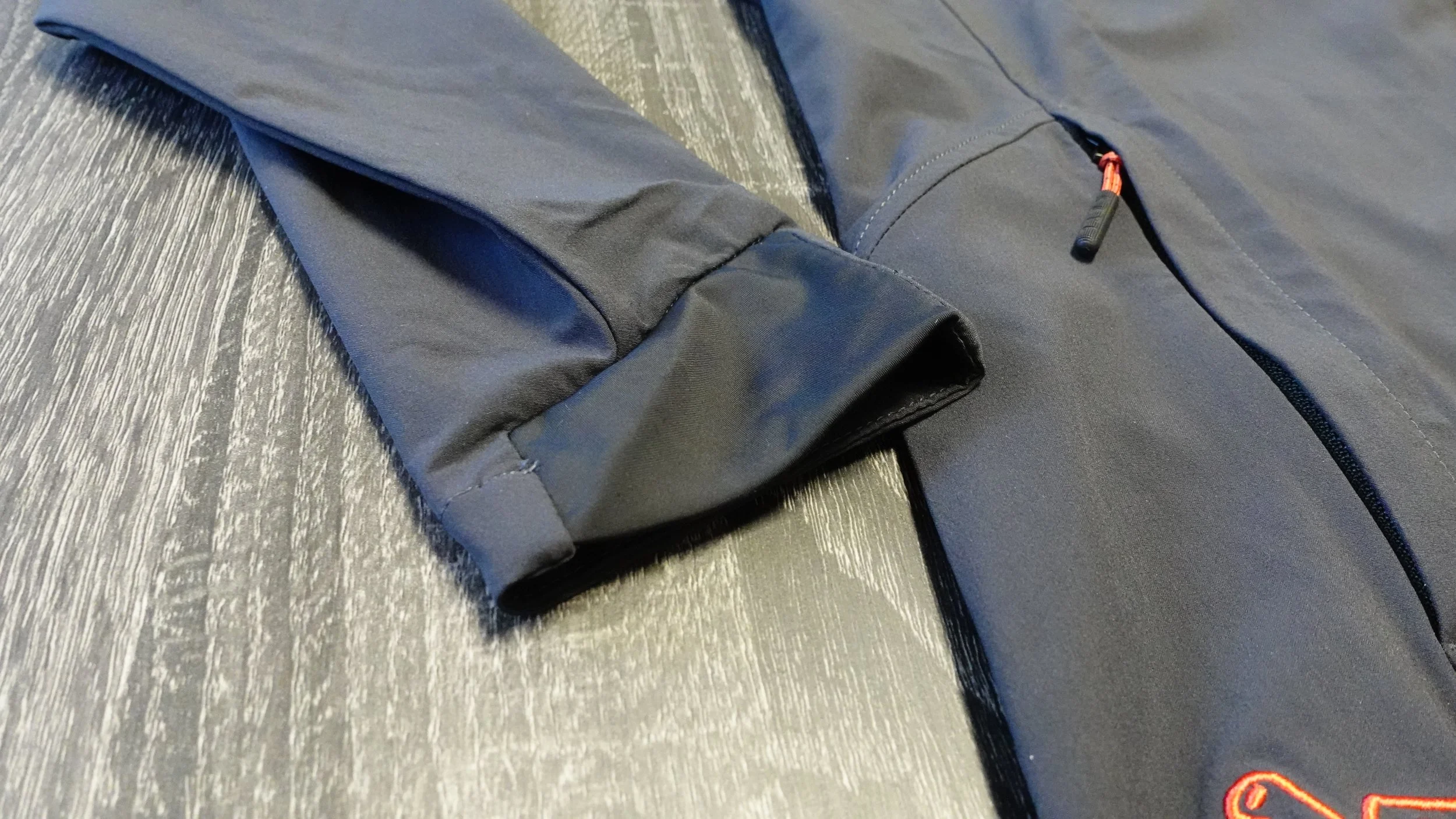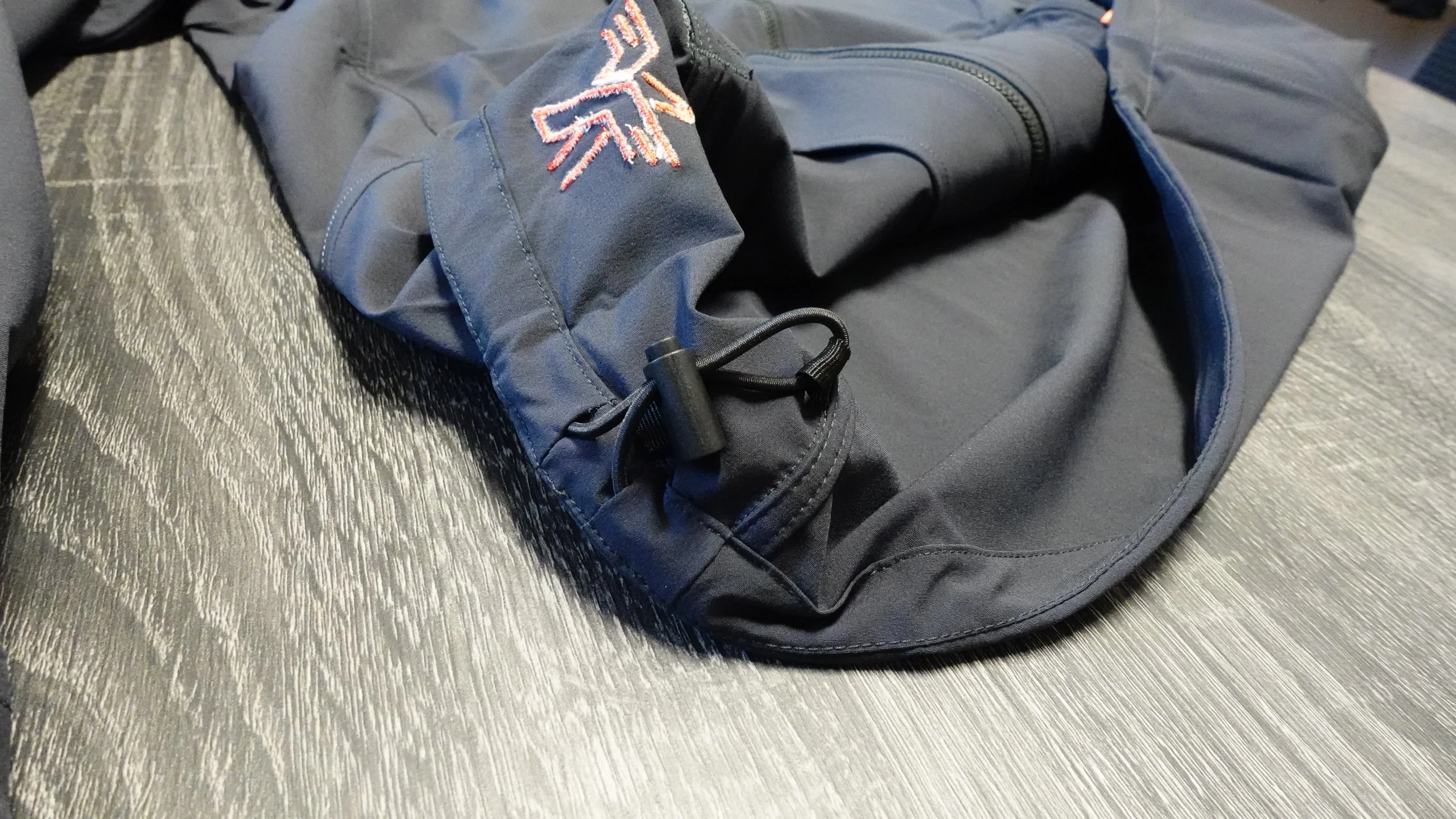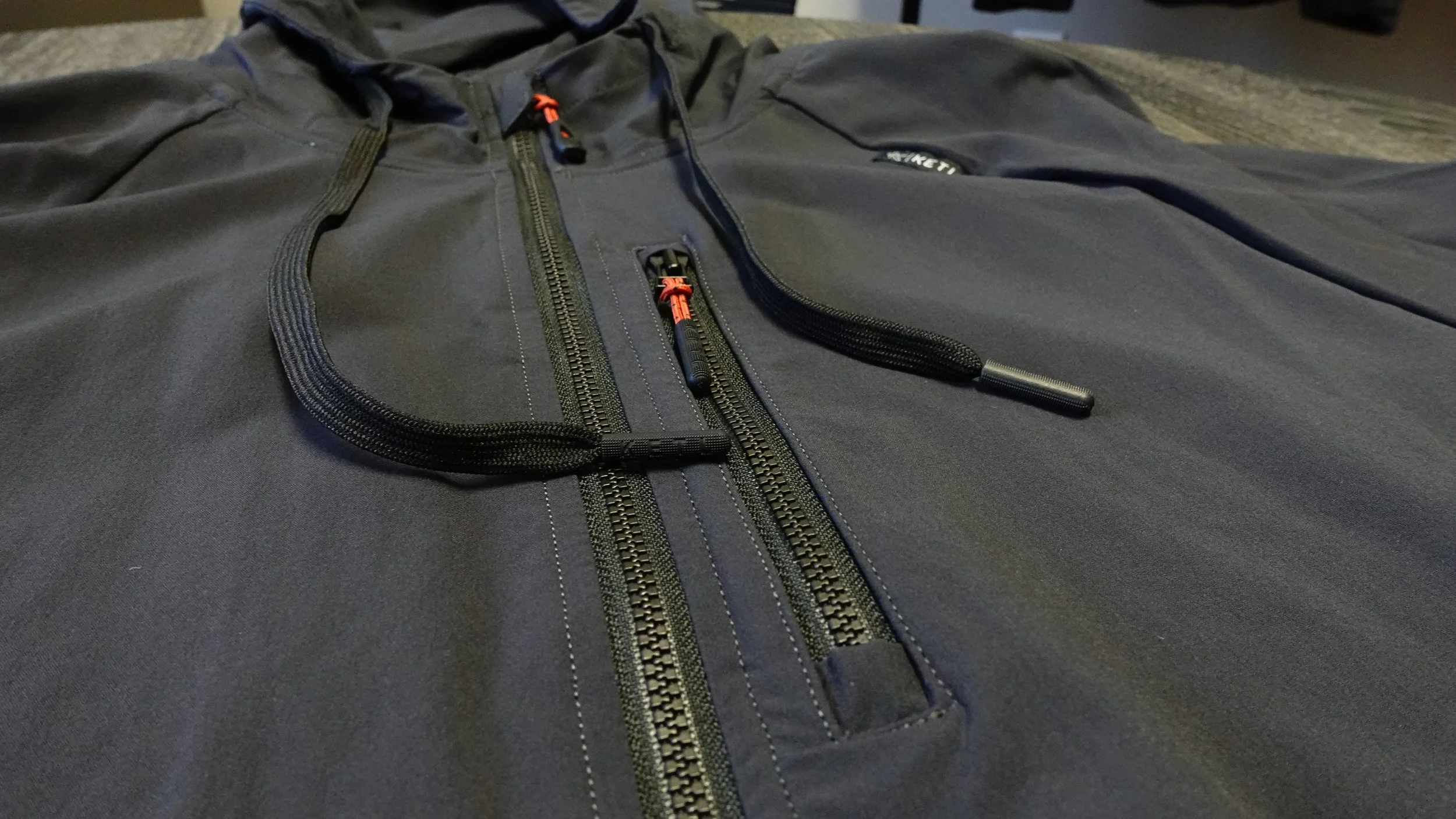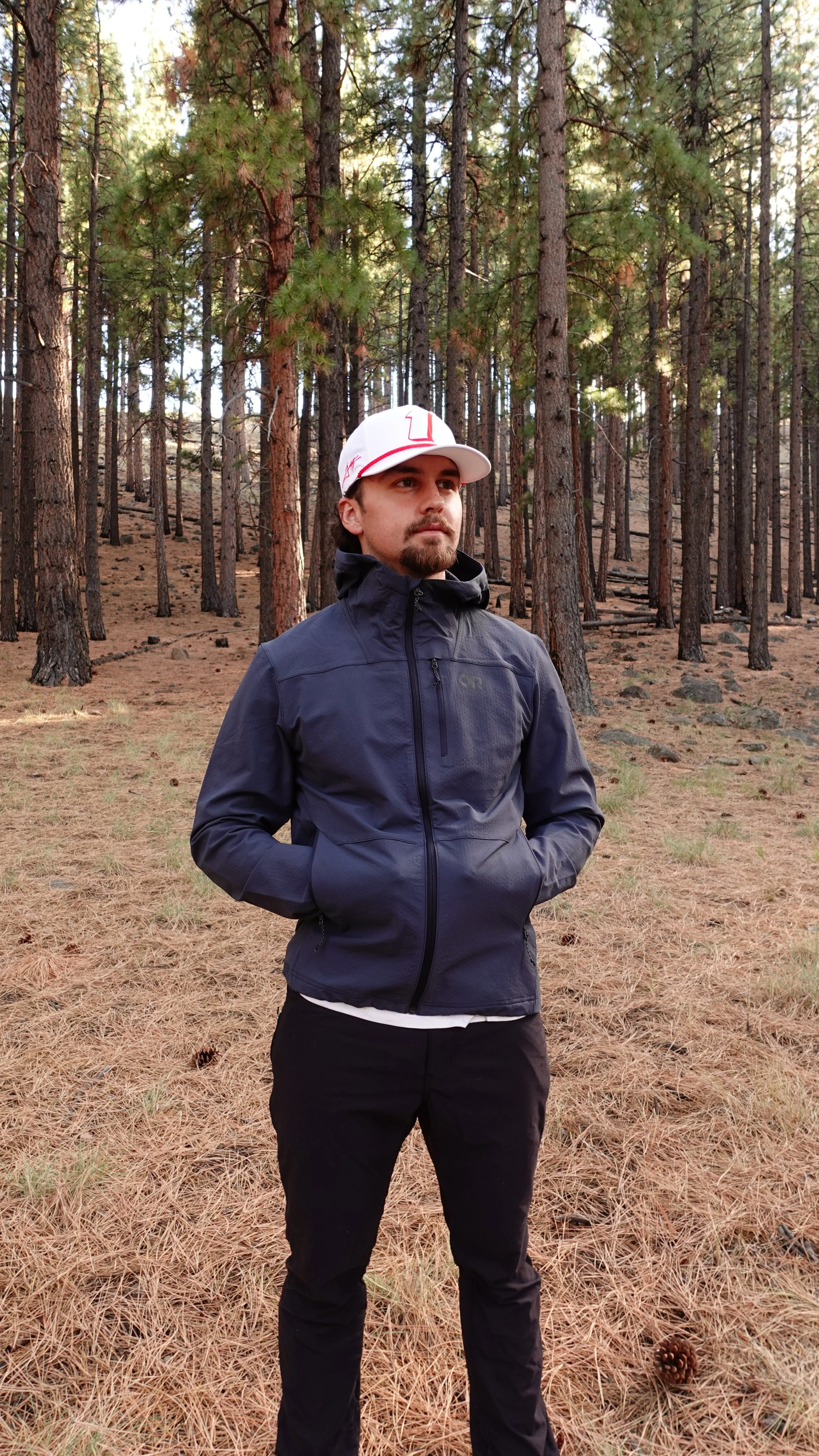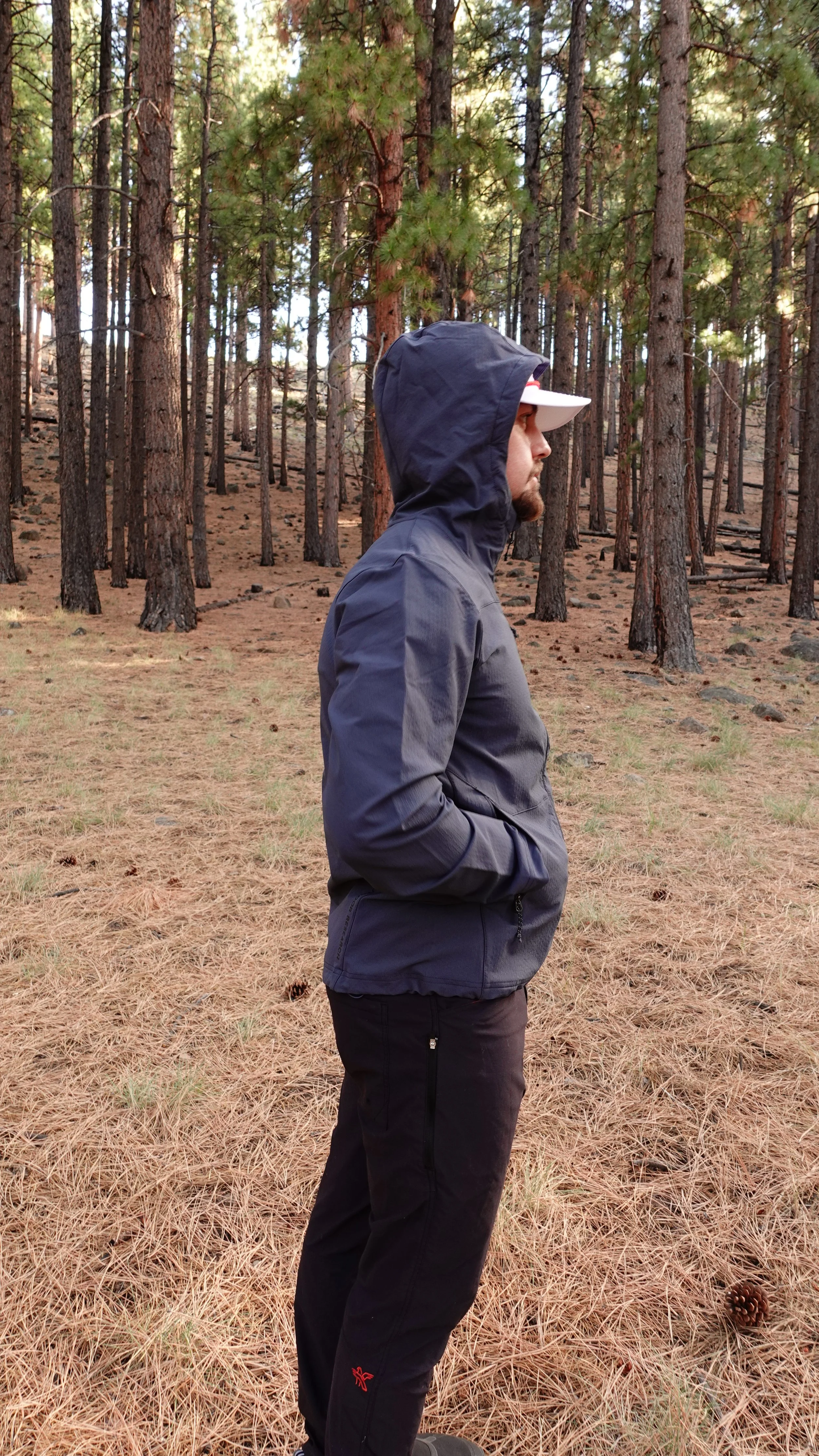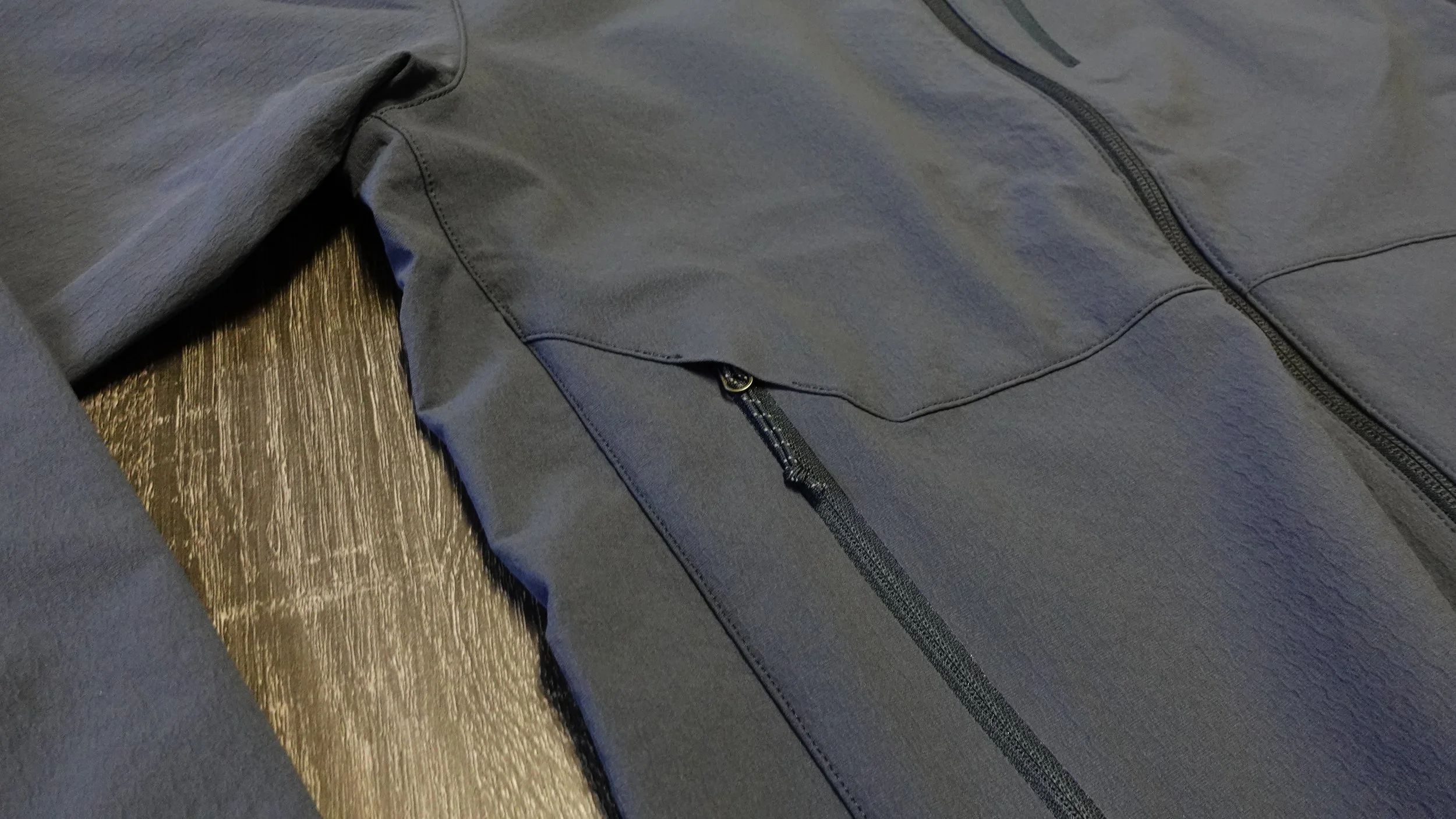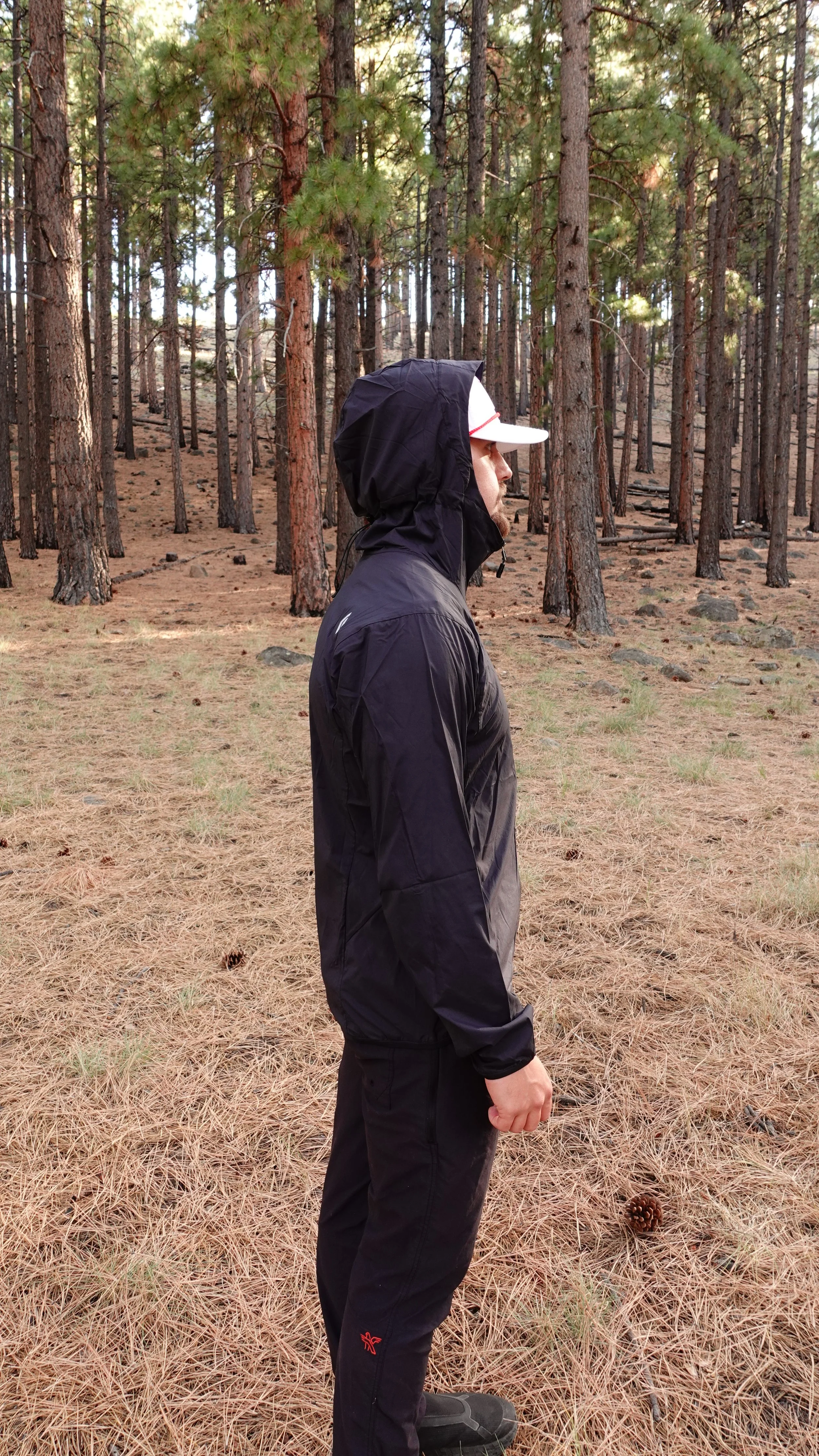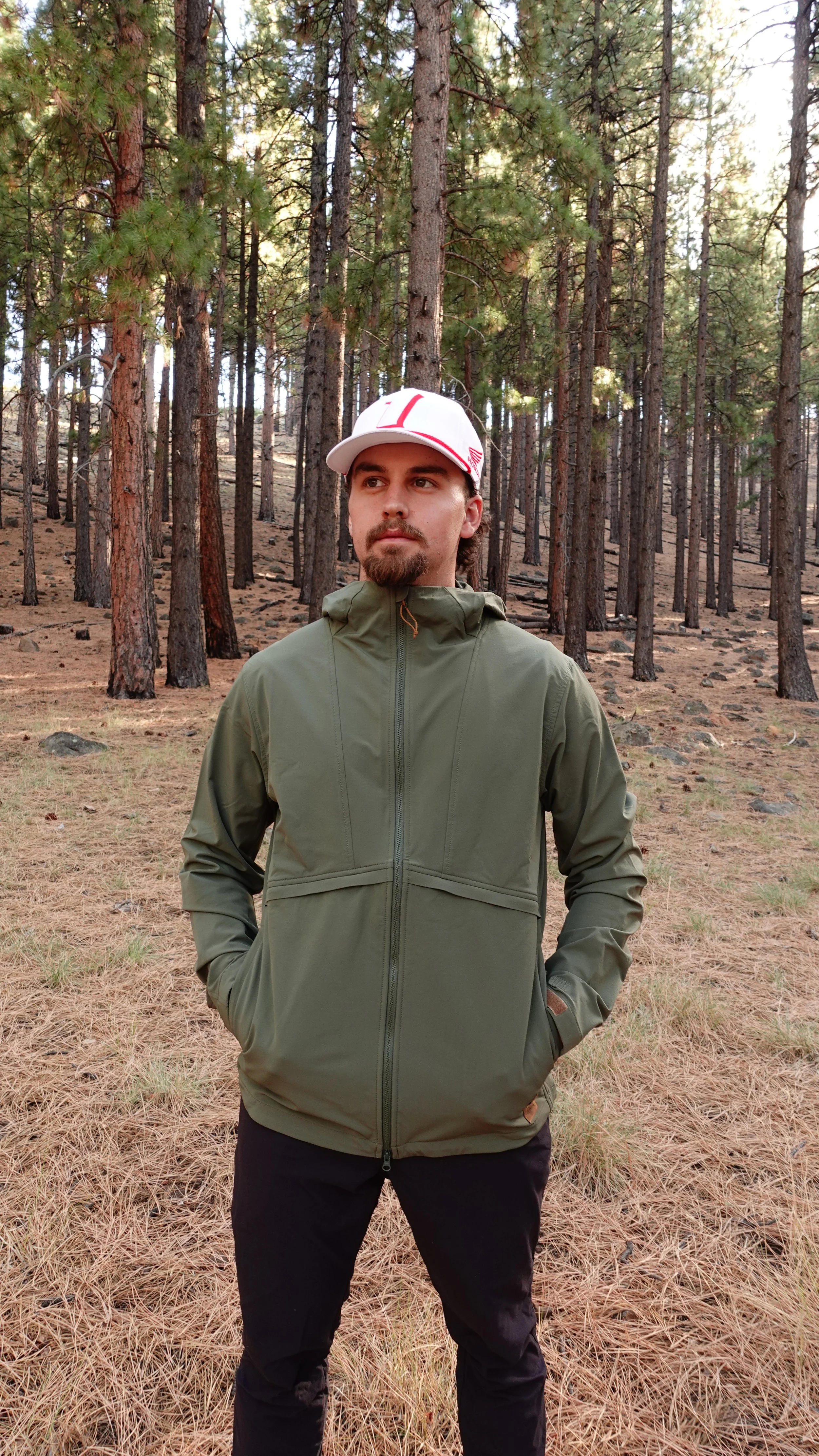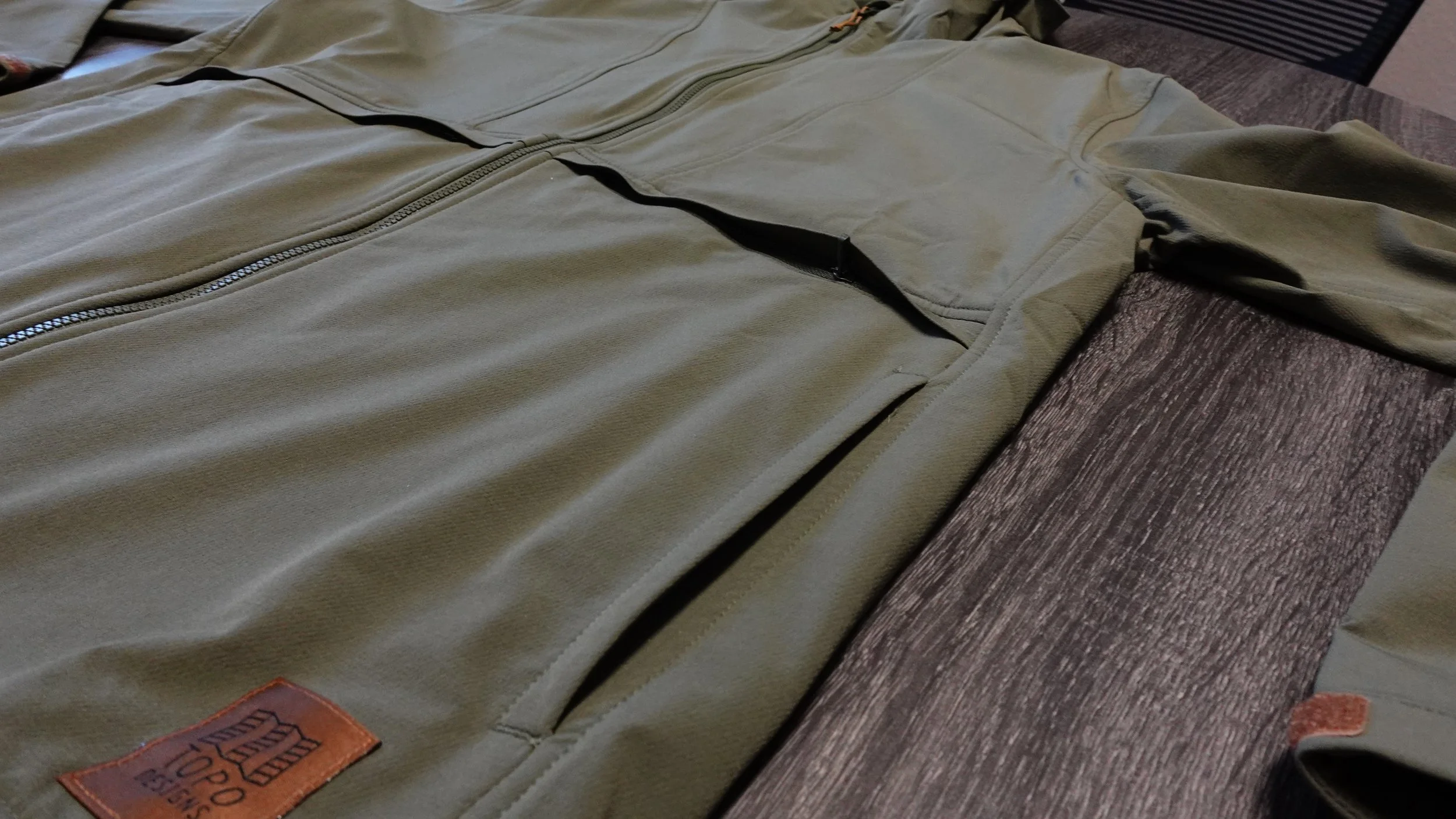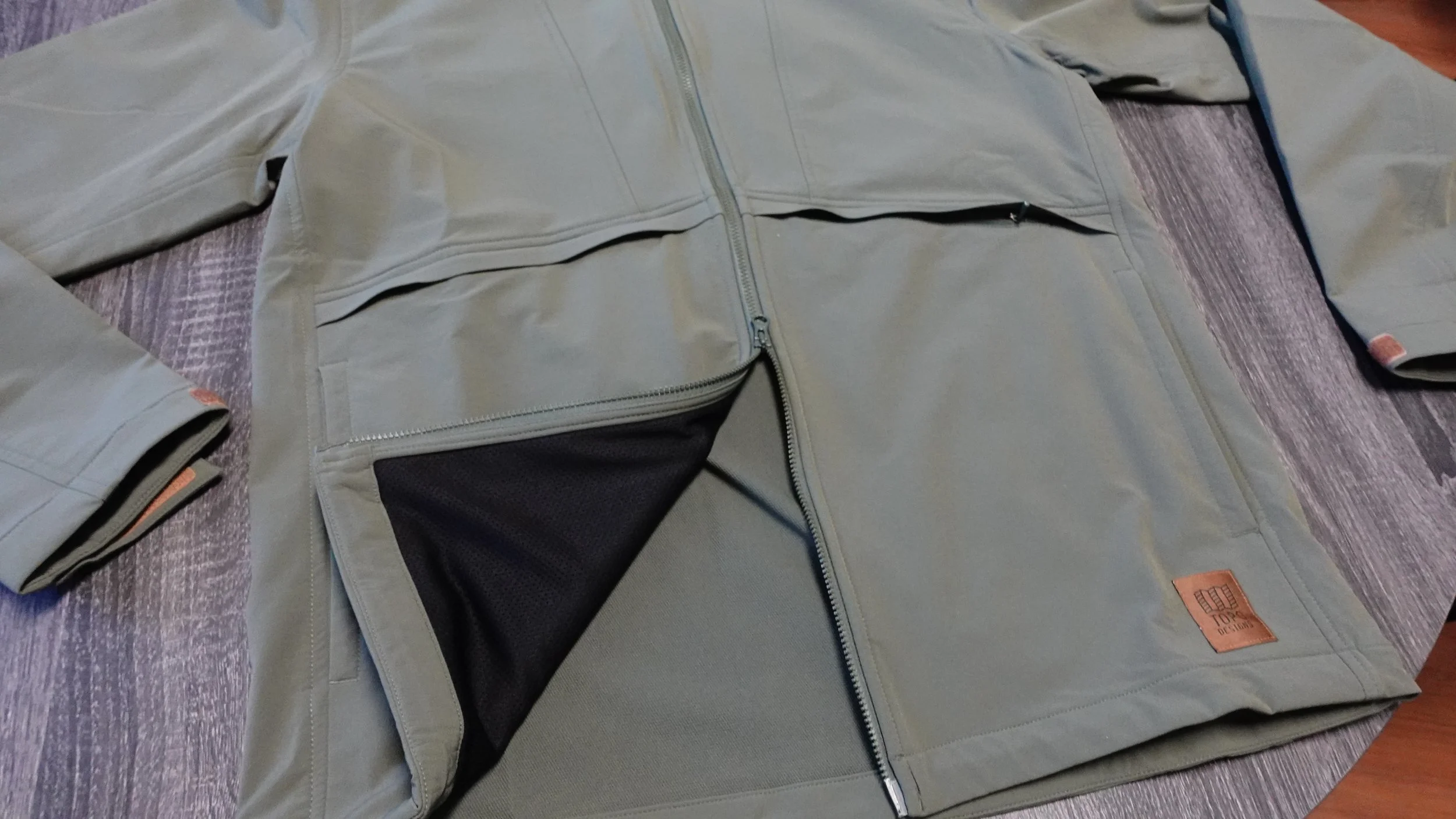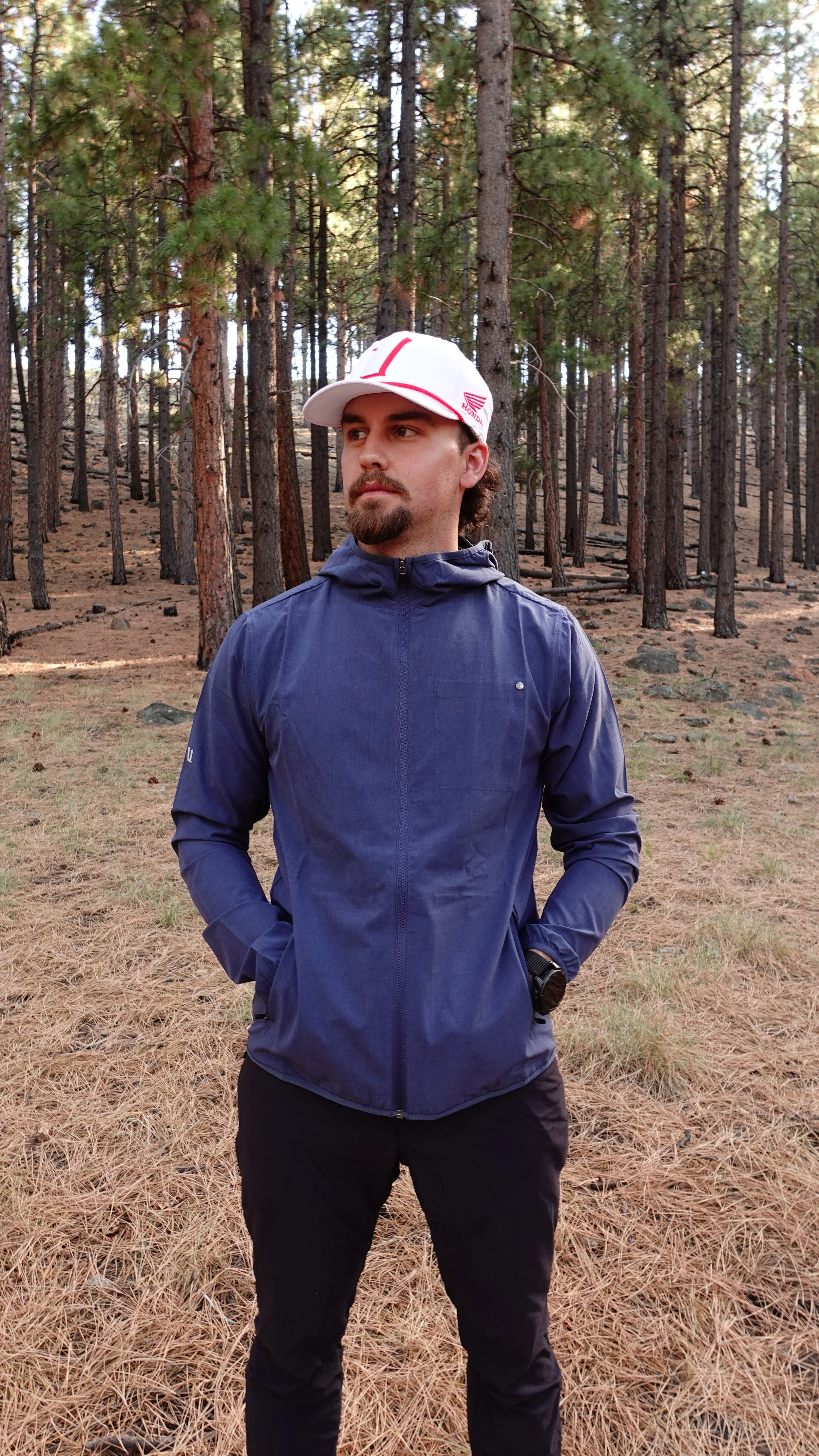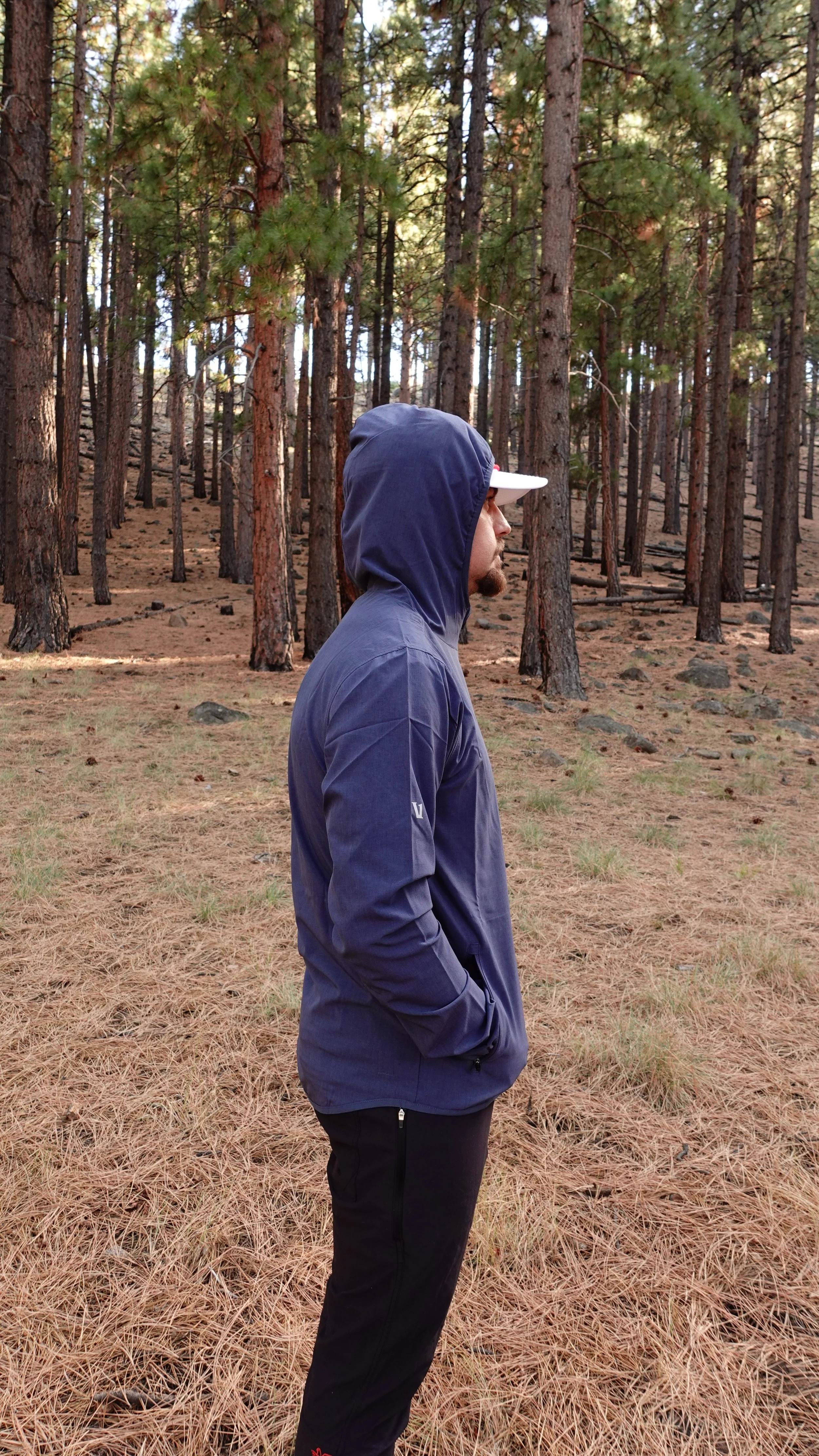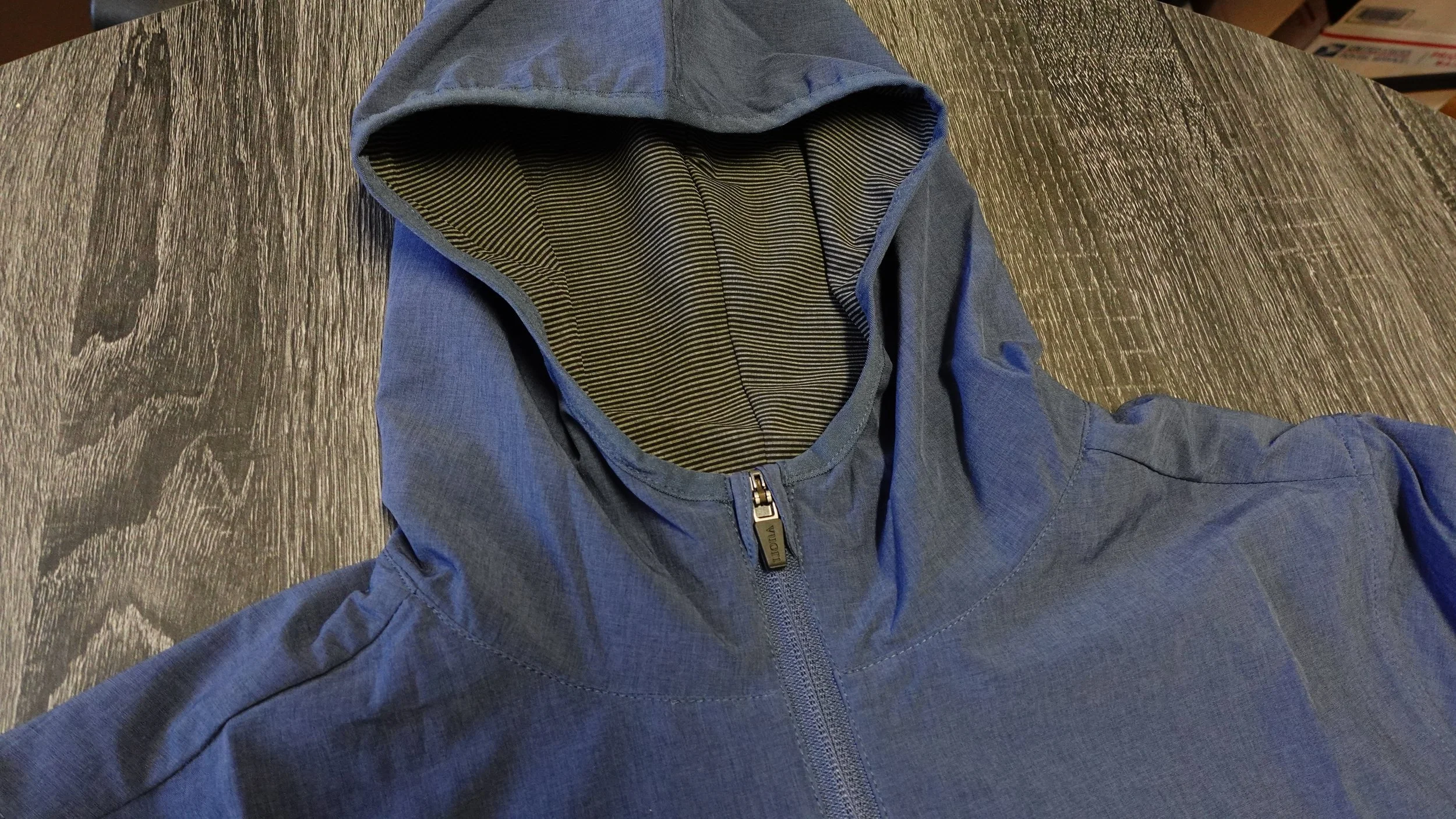Our Top 5 Travel Jackets: Tested in the Wild
Looking for the best men’s travel jacket you can wear from airport to alpine? We tested five versatile shells for packability, weather resistance, and everyday comfort
Introduction:
When we’re traveling or exploring the outdoors, here at Adventure Worthy, we look for a great jacket that is perfect for the demanding outdoors, something to wear around town, or while traveling to new places. We believe a great travel jacket keeps you comfortable through changing weather, allows freedom of movement, and packs down easily. In this review, we take an in-depth look at five of the best men’s jackets for adventure travel: the KETL Escapade Lightweight Active Travel Jacket, Outdoor Research Ultima Soft Shell Hoodie, Black Diamond Alpine Start Hoodie, Topo Designs HighPeak Jacket, and the Vuori Outdoor Trainer Shell. Each of these jackets has unique features that shine in different scenarios, whether you’re on a mountain trail, wandering a new city, or jogging at sunrise. We’ll examine every feature thoroughly and honestly.
The Verdict:
Best All-Around Adventure Travel Jacket - KETL Escapade Lightweight Active Travel Jacket: Stretchy, breathable softshell with smart pockets and DWR; under a pound and under $100 makes it the default “always pack” layer.
Most Weather-Resistant Softshell - Outdoor Research Ultima Soft Shell Hoodie: Tough double weave fabric, UPF 50, and a dialed hood; blocks wind and shrugs off drizzle while breathing on the climb.
Best Ultralight Packable Wind Shell - Black Diamond Alpine Start Hoodie: ~7.4 oz Schoeller stretch woven with NanoSphere DWR; stuffs into its chest pocket and disappears until the ridge gets gusty.
Most Feature-Packed Travel Jacket - Topo Designs HighPeak Jacket: Dual-entry pockets, back yoke vent, relaxed fit; city-friendly style with trail utility (great for passport, snacks, and hand-warming).
Best for Active Training & Running - Vuori Outdoor Trainer Shell: Quick dry stretch, odor control, reflective hits, and a drop tail; ideal for dawn runs, casual rides, and athleisure travel days.
KETL Escapade Lightweight Active Travel Jacket ($94.95) Best All Around Adventure Travel Jacket.
A do-it-all jacket that balances comfort, packability, and weather resistance, at a price that makes it easy to toss in the bag every time.
The Nitty Gritty:
Fabric & Build: 4-way stretch softshell (53% nylon, 35% polyester, 12% spandex) with DWR coating for water resistance. Highly breathable and flexible, with a modern athletic fit.
Weight & Packability: ~394 g (13.9 oz) in size M. It’s lightweight and compressible, and it packs nicely into a suitcase or backpack, so it’s always on hand during travel. I often stuff mine into its own hood or a corner of my daypack; it doesn’t take up much space.
Hood & Adjustments: Fixed hood with drawstring adjusters (the hood has a generous size, which I found can even fit over a bike helmet in a pinch). The wrist cuffs are stretchy and fitted (no velcro, but a snug elastic stretch), and there’s a drawcord at the waist hem to cinch it tight. This helps keep the cold drafts out when you’re on a breezy ridge or hitting the downhill on a bike during those chilly mornings.
Pockets & Features: Excellent storage, 2 zippered hand pockets and 1 zippered external chest “media” pocket, plus 2 internal drop stash pockets for gloves or a beanie or an Uncrustable. The armpits have vented panels to allow extra airflow. The zippers have easy-grab pull tabs, handy when you’re wearing gloves. All these thoughtful details show KETL’s “detail-obsessed” design philosophy.
What We Like:
Versatile Comfort: The Escapade feels just as comfortable on a long flight as it does on a hiking trail. The fabric is super stretchy and unrestrictive. I’ve worn it mountain biking and even rock climbing, and it moves with me without binding. The breathability is excellent; I don’t overheat during active pursuits.
Travel-Friendly Design: It strikes a perfect balance between lightweight packability and useful features. Despite weighing under a pound, it still offers ample pockets and even some weather protection. We appreciated how the jacket protects the body from the wind on chilly mornings, yet is not too bulky to stow away when the day heats up.
Solid Weather Resistance: The DWR-treated fabric sheds light rain surprisingly well; water droplets bead up on the surface. During a drizzly forest hike, it kept me dry. It’s also a great windbreaker; on a gusty ridge in the Sierra, it cut the wind effectively while its vented armpits prevented me from getting clammy.
What We Don’t Like:
Trim through the shoulders for some: Looks sharp in town, but broad builds or heavy midlayers may want to size up.
Hood structure: In strong winds, it benefits from a firm cinch or a cap under the hood.
Field Test:
After a year of travel and trail days, this is the jacket that kept ending up in the pack. Windy desert hikes, chilly morning runs, quick scrambles in a drizzle—the DWR beads water well for its class, and the vented underarms keep things from getting clammy. At under a hundred bucks, it lands in that sweet spot where performance, comfort, and after-purchase support make it an easy first choice. It will not replace a full rain shell, but as an everyday travel and adventure layer, it punches above its weight.
Outdoor Research Ultima Soft Shell Hoodie ($199) Most Weather-Resistant Softshell
A tough, breathable softshell for high-altitude pursuits and variable weather.
The Nitty Gritty:
Fabric & Weather Protection: Constructed from a bluesign®-approved 92% recycled nylon / 8% spandex double-weave fabric (70D face). This material is abrasion-resistant for rugged use and has a DWR finish, making the Ultima water- and wind-resistant. It’s not a raincoat, but it will shrug off light precipitation and block most wind. There’s also UPF 50 sun protection built in, which is great for high-altitude sun exposure.
Weight & Warmth: Weighs about 1 lb 1.9 oz (500 g) in men’s Medium. This is a midweight softshell, heavier than an ultralight windbreaker but lighter than insulated jackets. It has a brushed interior lining that feels soft against the skin, adding a touch of warmth and moisture-wicking comfort. I found this ideal for fall and spring hiking; over just a t-shirt, it was enough in 50°F breezy weather. In colder temps, it layers well over a fleece.
Hood & Fit: Features a fully adjustable 3-panel hood with a molded visor. The hood easily cinches down for a secure fit. I’ve worn it over a climbing helmet (size M helmet, size M jacket), and while it’s snug, it does stretch over. The fit overall is standard, not overly slim, not baggy, and the fabric’s stretch allows a full range of motion. I can easily move around with this jacket without it riding up. The hem is drawcord-adjustable, and the cuffs are bonded and articulated with a slight internal elastic gusset. So no velcro to fiddle with, but a clean cuff that stays in place and can comfortably push up your forearms when needed.
Pockets & Features: Three exterior zip pockets, 2 hand pockets, and 1 chest pocket, all positioned high enough to access while wearing a backpack hipbelt or climbing harness. The chest pocket is big enough for a phone or snacks. All zippers are quality YKK with pull tabs. And despite its solid weather resistance, it’s extremely breathable ideal for high-output activities where a rain jacket would make you feel clammy.
What We Like:
Excellent Weather Versatility: The Ultima Soft Shell shines in those in-between conditions when it’s too blustery or drizzly for a fleece, but you don’t want a full hardshell. I’ve worn it on a 12,000-ft ridge with mixed sun, wind, and a bit of graupel, and it handled everything in stride. Wind can barely penetrate, and light rain beads off thanks to the DWR. Unlike a rain jacket, though, it breathes well enough that I stay comfortable during aerobic climbs. It’s a perfect companion for mountain hikes, spring skiing, or travel in variable climates.
Durability and Quality: This jacket is built to last. The nylon blend fabric is tough, mine has brushed against granite and been shoved into overstuffed packs with no signs of wear.. It’s reassuring to have gear that can handle real adventure abuse.
Adjustability & Comfort: The hood adjusts well (tightens around the head so it moves with you), the hem drawcord keeps the fit sealed, and the stretch of the fabric + articulated patterning means superb mobility. Whether I’m reaching overhead on a climb or bending down to tie boots, the Ultima moves with me. The brushed interior also gives it a cozy feel, so I often wear it over just a short-sleeve base layer it never feels clammy. In reviews, people frequently mention how comfortable and “so good in every way” this hoodie is.
What We Don’t Like:
Heavier & Less Packable: At over a pound, the Ultima is the heaviest jacket on this list. If you’re counting ounces for ultralight travel, this might be overkill. It does not pack into its own pocket and takes up more space in a pack than the thinner jackets here. For weight-conscious backpackers, a lighter windshell might be preferable when rain isn’t a big concern. As one critique noted, “for the weight, I’d opt for other options” in some cases.
Draw Strings: OR is using elastic draw strings internally in the jacket. Although it gives it a very sleek design and look, I found that the drawstrings loosen incredibly quickly. I had to tighten the drawstrings together in order to keep the hood tight. Due to where the strings can be found, you have to unzip the jacket almost halfway in order to tighten the hood. I’m nitpicking here, but the process to tighten the hood takes quite a bit longer than its counterparts.
Pricey Investment: At $199, it’s on the high end for a non-insulated jacket. Given the quality, it delivers value, but budget travelers might hesitate. You are paying for premium materials (recycled nylon, eco-friendly production) and OR’s warranty. I’ve found it worthwhile because I use it constantly in shoulder seasons. Still, $200 could get you a lighter windshell and a midlayer fleece if you went with other brands.
Field Test:
The OR Ultima Soft Shell Hoodie was a great outer layer for a summit attempt on Mt. Rainier’s lower slopes. On a fast approach in cool September weather, it was ideal that I stayed dry from internal sweat thanks to the breathability, and when a cold wind picked up above the tree line, the jacket shielded me while others were struggling with flapping rain shells. I did notice that being “so breathable” means the cold can cut through if you’re not generating heat. I had to layer it under a hardshell when we stopped moving. In everyday use, I’ve taken this jacket on trips to the Pacific Northwest, where the weather changes by the hour. It excels for long hikes where you might get a bit of everything. I also appreciate its clean look. The design is low-key enough that I’ve worn it as my only jacket on trips to mountain towns, using it for hiking by day and to the brewery at night. Overall, the Ultima is a versatile, very durable softshell. Just treat it as a hyper-breathable mini softshell-raincoat hybrid, not for monsoons, but for most excursion scenarios; it’s a reliable companion. If you prioritize mobility and weather protection in one piece, the Ultima is worth the space in your pack.
Black Diamond Alpine Start Hoodie ($199) Best Ultralight Packable Wind Shell
This ultralight softshell packs to the size of a burrito yet fends off wind, light rain, and cold.
The Nitty Gritty:
Fabric & Weight: The Alpine Start is all about being ultralight. It weighs only 210 g (7.4 oz) in a men’s medium, which is astonishing given its functionality. Black Diamond achieves this using a Schoeller® stretch-woven nylon fabric with NanoSphere® DWR technology. The fabric is very thin but surprisingly tough, plus it has 4-way stretch. On the other hand, it feels like a hybrid between a windbreaker and a softshell, thin and pliable but not plasticky. I’ve crumpled this jacket into its pocket hundreds of times, and the material bounces back without wrinkles or damage, which should be expected for a jacket at this price.
Weather Performance: Though featherweight, it provides great weather resistance for its class. It’s highly wind-resistant. I’ve worn it in 30–40 mph gusts while on a trail run and stayed comfortable. The NanoSphere DWR allows it to shed light rain and snow reliably (for a time). It’s important to note this isn’t waterproof, but for “surprise” showers or intermittent rain, it holds up; consistent with being a “water-resistant soft shell” designed for on-route use. Breathability is excellent; the fabric lets moisture escape easily, preventing that clammy feeling during aerobic climbs. Think of the Alpine Start as a super-breathable wind shell with benefits.
Hood & Fit: It has an adjustable, helmet-compatible hood. The hood is on the smaller side for a helmet. Black Diamond made it just big enough to stretch over a climbing helmet, so it’s perfect without one or with a low-profile helmet. I appreciated that the hood cinches down snugly for use when not wearing a helmet, so it doesn’t become a windsock. The fit of the Alpine Start is trim and articulated. It’s cut for climbing slightly longer in the torso and with gusseted underarms, so it doesn’t pull out of a harness when reaching up. I’m able to layer it over a light fleece if needed, but it’s a fairly streamlined fit overall (my usual size fits over a baselayer or thin midlayer, but not a bulky sweater). Cuffs are simple elastic no adjustment, but they’re low-profile and you can push them up your forearms when you need to cool off. The hem doesn’t use elastic, keeping the weight down by not using a drawcord, but sacrificing a custom fit.
Pockets & Packability: In keeping with its minimalist ethos, there’s just one pocket a single zippered chest pocket on the left. That pocket doubles as the stuff sack; you can turn it inside out and zip the whole jacket into it, creating a small pouch with a loop (to clip to a harness, for example). The lack of hand pockets might disappoint some, but it’s a conscious design choice to save weight and bulk. When climbing or fast-hiking, I rarely miss them since I’m either wearing a pack or harness. The chest pocket is large enough for a phone, a map, or trail snacks. Overall, the Alpine Start’s feature set is pared down to the essentials but those essentials are very well executed
What We Like:
Featherweight & Packable: The Alpine Start practically disappears in your pack. It packs down into its chest pocket to about the size of an apple or burrito. I clip it to my harness or toss it in my hydration vest pocket very easily. For someone who’s constantly traveling through airports, this jacket is great if you don’t mind not having a lot of storage: it takes negligible space, so you can always bring it “just in case.” On trail runs and multi-pitch climbs, this jacket has kept me warm when the wind picks up or a cool evening rolls in.
Freedom of Movement: I experience zero restriction on reachy moves or when twisting my torso. The elastic cuffs and the flexible fabric allow me to easily push up sleeves or vent if needed. It truly feels made by climbers for climbers. Even during trail runs, it’s so lightweight and non-restrictive that I forget I’m wearing a jacket until I need its weather protection.
Surprising Durability: One might expect such a thin shell to be fragile, but this piece is tougher than it looks. I’m pleasantly surprised by how well it holds up to abuse. I’ve scraped against rock, shoved it in packs with gear, and there’s barely a snag to be found. The fabric’s NanoSphere DWR also maintains performance longer than standard DWR. This jacket proves that minimalist doesn’t mean flimsy.
What We Don’t Like:
Minimalist Trade-offs: The weight savings mean you give up some comforts. No hand pockets, I sometimes instinctively go to slide my hands into pockets that aren’t there when standing around. It’s all about function-first simplicity, which is great during activity, but less cozy for casual wear or travel days. If I’m just walking around town on a chilly day, I miss being able to tuck my hands in my pockets.
Limited Warmth & Protection: This is not an insulated jacket, nor a rain shell. When stationary in cold weather, it doesn’t provide much warmth on its own; it’s truly a shell layer. I learned that on a 50°F (10°C) windy summit, where I stopped moving, I got cold fairly quickly until I layered it. It’s best used while you’re active or paired with insulating layers. And as mentioned, in steady rain it wets through fast (within 10-15 minutes in when I was out for a hike.) It excels in short bouts of light rain or snow and as a wind stopper, but for anything more, you’ll need backup. Think of it as a “just in case” emergency weather layer or a constant ultralight windbreaker, not a dedicated rain jacket.
Athletic Fit Might Limit Layering: The trim fit that’s so nice for climbing also means you can’t pile much underneath. If you plan to wear this over a puffy jacket at a belay, you might need to size up (though doing so could make it looser and flap more in the wind). For me, it fits over a base layer and light midlayer comfortably, but it’s snug over a thick fleece. In very cold conditions, I often switch to a roomier softshell or hardshell that can accommodate insulation.
Field Test:
The Black Diamond Alpine Start Hoodie has accompanied me on every climbing trip and international trek for the past two years. It lives in the lid of my backpack because I know if the weather turns or the wind starts howling, I can whip it out and get instant relief. One memorable use was on an alpine climb in the Sierras: The morning was calm, so I started out in just a sun shirt, but as we reached a ridge, a bitter wind kicked up. I pulled out the Alpine Start from its chest pocket and zipped it up. The jacket shielded me very well from the gusts, yet I could still move freely on technical rock. Later that day, we got back to camp just before some light rain fell; I wore the Alpine Start while pitching our tent and stayed reasonably dry through the drizzle. By nightfall, I layered it under a warmer coat mainly for a bit of warmth. I’ve also taken it traveling as my only jacket in warm climates, for example, on a summer trip to Europe, it was perfect for surprise rain in the Alps and windy ferry rides in Ireland. Its low-key style (plain black with a small BD logo) doesn’t scream “technical gear,” so I felt fine wearing it in cities too. Perhaps the highest praise: this jacket has nothing of significance I’d fault it for in its intended purpose. It’s a specialist amazing for climbing, hiking, and running. If you want maximum protection for minimum weight, the Alpine Start is as good as it gets.
Topo Designs HighPeak Jacket ($189) Most Feature-Packed Travel Jacket
A modern twist on the classic outdoor jacket, with an array of useful features and a stylish, roomy fit for travel.
The Nitty Gritty:
Fabric & Feel: Made from a 90% recycled nylon / 10% spandex technical woven fabric with a PFC-free DWR finish for water resistance. The material is midweight, thicker than a windbreaker, but not heavy or stiff. Out of the box, it feels durable yet has a nice stretch. It’s breathable enough for active use but leans more toward weather protection than the ultralight fabrics. I’d say it’s comparable in weight to a light canvas jacket but with much more give and weather-shedding ability. The HighPeak has a roomy, relaxed fit (“oversized fit” by design), which is great for layering or those who prefer a casual drape. It definitely channels a bit of retro outdoor style with its cut and pocket layout, making it as suitable for travel in cities as on the trail.
Weather & Ventilation: This jacket is built for “transitional days”, unpredictable weather in spring or fall. The DWR-coated nylon fabric blocks wind effectively and can handle light to moderate rain. I wore it during a misty coastal hike and stayed dry; in a heavier downpour (20+ minutes of rain), it eventually started to soak through some at the shoulders. The HighPeak’s somewhat unique feature is a back yoke vent; there’s a cape-style vent across the upper back, which allows heat and moisture to escape. This is reminiscent of classic travel jackets and trench coats. It came in handy when I was walking around in humid climates. Even though the fabric is robust, I don’t overheat as easily thanks to that vent. Overall, it balances weather protection with breathability fairly well. It’s not as breathable as the Alpine Start (fewer stretch panels), but better ventilated than a fully sealed rain shell.
Hood & Adjustability: The hood has a structured visor (a stiff brim) but doesn’t have drawcords. The visor helps keep rain off my face, and the hood itself is generously sized. It’s not explicitly helmet-compatible, but due to the oversized fit, I can wear it over a beanie and headphones easily. Without any drawcords, the hood doesn’t stay snug enough when the wind picks up. The cuffs are adjustable with hook-and-loop (Velcro) straps. The hem also has a drawcord cinch to seal in warmth or tailor the fit.
Pocket Configuration: Topospared no expense with pockets. There are dual-entry front pockets you have side seam hand pockets for casually warming your hands, and top-entry zippered pockets in the same area for secure storage. Essentially, each front pocket is like a pouch you can access from the top zipper (to drop in your phone, passport, etc.) or from the sides (to slide your hands in), very clever and travel-friendly. I’ve been able to keep my valuables zipped in, and still have a place to shove my hands on a chilly morning walk through town.
What We Like:
Utility for Travel: The HighPeak Jacket really earns its keep as a travel piece. I’ve worn it on multi-country trips where I needed a single jacket that could handle the trail and the city. The pockets made life easier, for example, in the airport, I stashed my passport in the zip-top pocket and my plane snacks in the other, while my hands stayed warm in the side entry portion. The relaxed fit was comfortable on long flights (not constricting at all). When sightseeing in a drizzle, I flipped up the hood and appreciated the little visor keeping rain off my glasses. The back vent kept me from sweating while hustling with luggage. As an all-around travel jacket, it checks a lot of boxes: weather resistance, comfort, loads of storage, and even style.
Unique Style with Function: The HighPeak brings a bit of style to the technical jacket world. Topo is known for blending retro and modern, and here the slightly oversized silhouette and pocket design give it a cool, casual vibe. I’ve received compliments wearing it around town it doesn’t scream “hi-tech rain jacket,” it almost looks like a fashion-forward anorak or a modern field jacket. From a personal standpoint, I love being able to go for a hike in the afternoon and then walk into a cafe in the evening wearing the same jacket, without feeling out of place. It transitions well between outdoor activities and urban environments.
What We Don’t Like:
Bulkier to Pack: Compared to others on this list, the HighPeak is a bit bulkier and heavier. It’s not a jacket that stuffs into its own pocket or a tiny pouch. When folded, it’s about the size of a lightweight hoodie or windbreaker plus some. In a carry-on suitcase, it will take up space akin to a sweatshirt. On a backpacking trip, it wouldn’t be my first choice if I were counting every ounce. So, for ultralight travelers or summer-only trips, it might be more jacket than you need. I missed the featherweight feeling of the Alpine Start when I had to pack the HighPeak; it’s just a different category of jacket, leaning more toward utility and durability over minimalism.
Oversized Fit Not for Everyone: The intentionally relaxed fit might not appeal to those who like trim, athletic jackets. If you prefer a tailored look or primarily need a jacket for intense physical activity (where excess fabric can flap in the wind), the HighPeak’s looser cut might feel a bit cumbersome. While I enjoyed the freedom (especially when layering a thick sweater easily fits underneath), one of my friends who tried it found it “too boxy” for his taste and was between sizes. If you’re on the shorter or very slim side, the jacket could feel a little large or long. I had the medium (I’m 5’9”) and it does fit generously, almost parka-like in length. This is great for coverage, but some may find it less sleek or “technical” looking. It’s definitely a stylistic choice.
Moderate Weather Resistance: Even with the DWR and solid fabric, the HighPeak is not sealed like a raincoat. In extended rain or truly nasty weather, moisture can find its way in, especially via the vent or seams. I noticed after an hour in steady rain, some dampness around the shoulders and vent area (trade-offs of ventilation). It’s also not insulated, so in cold weather you need layers. Essentially, it’s a shell for mild to moderate conditions. Heavy rain or winter cold requires supplementary gear. That’s not so much a flaw as understanding its purpose, but worth stating: for all its features, don’t expect it to replace a dedicated rain jacket in a monsoon or a down parka in the snow.
Field Test:
I took the Topo Designs HighPeak Jacket on a 3-week trip. I needed a jacket that could handle hiking in the mountains, rainy days in town, and still look decent in town for dinner. The HighPeak did all that with aplomb. One day, I remember hiking in a light shower, I flipped up the hood and was quite comfortable, the rain rolled off as I trekked on. The hood did bring some annoyance when the wind kicked up. It’s just very practical when it comes to the pockets. Also, the ventilation meant I didn’t get sweaty even hustling through crowds or running to catch a bus. The back vent works subtly but effectively. If I compare it to other jackets I’ve used, the HighPeak feels like a blend of an old-school field jacket and a modern softshell (stretchy, weather-resistant). That hybrid nature served me well for travel, where versatility is king. On the downside, packing it into my carry-on required a bit more room, and I wouldn’t bring it on a minimalist backpacking trek. But for general travel and everyday adventures, it’s become a favorite. I even wear it around my hometown on weekend errands because it’s comfortable and I can carry my stuff without a bag. Topo’s HighPeak has proven to be a reliable, thoughtfully designed jacket that adds a touch of style to functional travel gear.
Vuori Outdoor Trainer Shell ($118) Best for Active Training & Running
A lightweight, stretch-infused shell for workouts and outdoor fitness, doubling as a casual everyday windbreaker.
The Nitty Gritty:
Fabric & Performance: The Outdoor Trainer Shell is built from a midweight performance stretch woven fabric (approximately 88% polyester, 12% elastane in most versions, with some recycled content, as Vuori notes it’s made from recycled plastic bottles). The fabric is treated with a DWR for water resistance and is also moisture-wicking and quick-drying, which is great for high-sweat activities. A great feature is that it’s odor-resistant (likely an anti-odor treatment in the fabric), which, as a runner, I truly appreciate you can work out hard and the jacket won’t stink up quickly. In terms of weather, it’s water-resistant enough for light rain; water beads on the surface initially. It’s also a decent windbreaker for breezy conditions. However, it’s not meant for heavy rain; think of it more as a glorified windbreaker. It feels nicer against the skin than a shiny nylon shell.
Weight & Packability: This shell is quite lightweight (though exact weight isn’t listed, it feels around 9–12 ounces in hand). It’s easy to pack down. I often roll mine into its hood or shove it into a corner of my backpack. While not as paper-thin as the Alpine Start, it’s still very packable, about the size of a small burrito when compressed. Because it’s designed for runners and travelers, Vuori kept it unlined and streamlined
Fit & Comfort: Modern athletic fit. Vuori describes it as having room for a light layer. I find it runs true to size, perhaps slightly on the slimmer side compared to traditional jackets (since it’s meant for athletic wear). The drop tail hem is a nice touch; the back is cut a bit longer to cover your backside, which is great when biking or stretching. The shell has elastic binding at the cuffs and hem (no velcro or drawcords here; it’s a simple elastic trim), which gives a secure fit without fussing with cords and velcro. But it can lack that custom fit feel. The collar comes up to about chin height when zipped, and the hood is fixed (and also elastic-bound). The hood does not have drawcords; it relies on that elastic trim to stay put. During some runs, it stays on fine, unless it’s very windy, in which case I sometimes hold it or wear a cap underneath. Overall, comfort is top-notch: it feels like wearing a lightweight track jacket that moves and stretches with you. I’ve done sprints, yoga, and even weightlifting in it on colder days; it never hinders movement.
Pockets & Reflectivity: The Vuori Trainer Shell comes with two zippered hand pockets on the front, which are generous enough for a phone, keys, etc. Importantly for a workout jacket, it also features a hidden internal chest pocket. This interior pocket lies against your chest and is great for keeping a phone or credit card secure, especially if you’re bouncing around on a run. I’ve put my smartphone in there; it fits snugly and doesn’t jostle as much as it would in a front pocket. The jacket also sports a reflective logo on the right arm and a small reflective hit on the lower left side, helping with visibility for evening or early morning workouts. These reflective elements are subtle in daylight but bright when lights hit them a nice feature for runners. There’s no dedicated stuff-sack pocket, but you can easily fold the jacket into one of its own pockets if needed.
What We Like:
Workout-Ready Design: As someone who often goes for dawn trail runs and outdoor bootcamp sessions, I love how the Outdoor Trainer Shell is tuned for activity. The stretchy, lightweight fabric makes a huge difference when I’m doing dynamic moves; the jacket moves with me and never feels restrictive. It’s also impressively breathable for a wind shell; the quick-dry fabric and venting mean I don’t end up drenched in sweat. After doing a chilly 10K run in it I started with it zipped up, and by mid-run, I had generated heat but didn’t feel overheated thanks to the moisture-wicking interior. By the end, I unzipped it and it dried off in minutes.
Great for Layering & Transitional Weather: The Vuori shell is excellent for those in-between temperatures (40s–60s °F, or 5–15 °C). It adds just enough protection to keep you comfortable at the start of a cold run, but it’s not so insulating that you’ll overheat once you get moving. Its modern fit leaves room for a light base layer or tee. I’ve layered it over both short and long-sleeve running shirts, and even over a thin hoodie for casual wear. In all cases, the fit was flattering, not baggy, but not skintight either. Also, the drop-tail hem has helped me stay warm on bike rides; no exposure when leaning forward. For travelers, this shell doubles nicely as a casual windbreaker for sightseeing or an evening walk. It looks stylish (the heathered textures and muted colors are easy on the eyes) and feels soft, not plasticky. I wore it on a coastal hike and then straight to a café and felt perfectly comfortable in both settings.
Value & Versatility: At around $118, the Outdoor Trainer Shell is relatively affordable compared to some higher-end jackets, yet it offers a lot. It serves multiple purposes: an active training jacket, a travel windbreaker, and even a light rain jacket in a pinch. In terms of value, you essentially get a cross-functional jacket that punches above its weight for both fitness and casual needs.
What We Don’t Like:
Not for Harsh Weather and terrain: While it sheds light rain, this shell will not hold up to heavy rain or prolonged wet weather. The fabric will saturate if the DWR wears off or in a downpour beyond 20-30 minutes. This jacket is more for urban athletics. It does pill and tear easily when being brushed up against rocks, trees, and bushes.
Limited Adjustability: The design keeps things simple (likely to reduce weight and bulk for exercise), which means no adjustable cuffs or hood. The hood relies on elastic, and it fits me well. If you’re sprinting or the wind is head-on, the hood might flop unless you wear a cap or headband to secure it. The cuffs are just elastic binding, fine for most cases, but you can’t loosen them. If you have larger wrists or gloves, it could feel a bit snug. That said, the elastic is reasonably stretchy. Also, there’s no hem drawcord; the drop-tail helps, and the cut is moderately slim, but in gale-force winds, the bottom could let drafts in. These are trade-offs for a cleaner, lighter design. 90% of the time, I don’t mind when in urban settings.
Athletic Aesthetic: This is a minor “con,” but the Vuori shell has a clear athletic look (especially in brighter or heathered color options). If you’re looking for something that doubles as a dressy travel jacket, this might appear too much like workout gear. It doesn’t have the multi-pocket urban styling of, say, the Topo HighPeak. I personally like its look, it’s modern and sleek, but some might prefer a jacket with more personality or a more rugged appearance for travel. On the flip side, if you primarily need it for running and the gym, this is spot-on. Just worth noting that its design, with the reflective logo and smooth knit-like fabric, telegraphs “I’m about to go for a run.” For most casual uses, it’s fine, but if I were, say, going to a business casual environment, I’d choose a different jacket.
Field Test:
I used this jacket quite a bit during morning runs. Living in a mountainous town, I often face cool and dark mornings, and this jacket has been great. On a 10k run by mile three, I felt comfortable, and I had built up a sweat, but the shell breathed so well that I didn’t feel drenched. In fact, the inside was barely damp, and it wicked away moisture as advertised. My GPS watch stayed accessible thanks to the elastic cuff (I sometimes tuck the cuff up a bit to glance at my watch, easy to do without velcro getting in the way). Finishing the run, I didn’t have that “sauna suit” feeling; instead, I was comfortable enough to leave it on while I did a cooldown walk.. The jacket dried out quickly in a few minutes.. Later that same week, I tossed the Trainer Shell in my travel bag for a weekend road trip. It barely took any space. I ended up using it as a casual windbreaker during a sunny but windy hike. The drop tail kept my lower back covered when scrambling over rocks, and I loved not worrying about sweat since it’s so quick-drying. I layered it over a flannel while we sat by a campfire; it blocked the wind. For a jacket so geared to training, it really holds its own in everyday scenarios. If anything, I’ve found myself wishing it had just a smidge more weather protection on some occasions (like a stiffer hood when biking fast), but those are small nits. The comfort and flexibility are its winning features; it almost feels like wearing a long-sleeve performance shirt, only it guards you from the wind element too. Among all the jackets here, the Vuori is the one I grab for anything active: from trail runs to quick hikes. It’s a testament to how versatile a well-made active shell can be.
Conclusion:
Choosing the right travel or active jacket comes down to what features matter most for your adventures. If you want an all-around champ that transitions from trail to town, the KETL Escapade is a fantastic choice with its balanced breathability, stretch, and travel-ready design. For those venturing into alpine or harsher climes where weather resistance and durability are key, the Outdoor Research Ultima Soft Shell Hoodie offers superb protection and freedom of movement. If ultralight and packable are your mantra, you’ll love the Black Diamond Alpine Start Hoodie, which disappears into your pack until needed and then defends against wind and light rain admirably. The style-minded explorer who values features and a relaxed fit will appreciate the Topo Designs HighPeak Jacket, blending utility and comfort in a distinctive look. And for the fitness enthusiasts or anyone seeking a stretchy, workout-ready shell, the Vuori Outdoor Trainer Shell shines as a versatile piece for running, hiking, and everyday wear.






